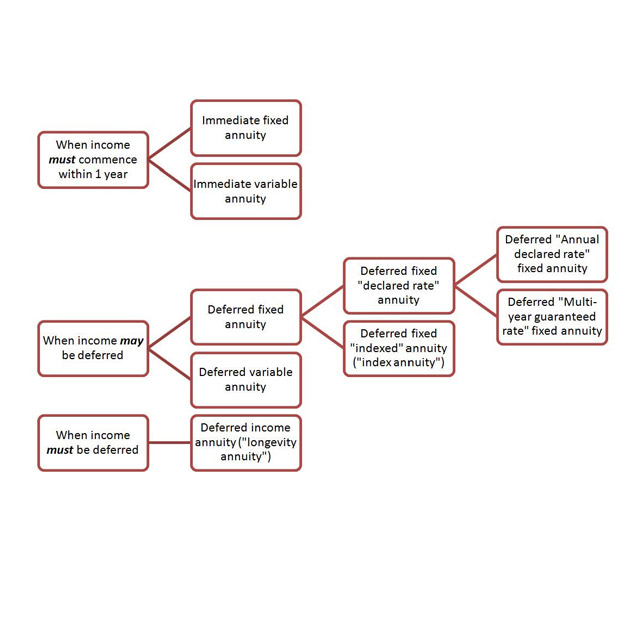All Categories
Featured
Table of Contents
Just as with a repaired annuity, the proprietor of a variable annuity pays an insurance coverage business a swelling sum or collection of settlements for the pledge of a series of future repayments in return. As discussed above, while a fixed annuity grows at an assured, continuous price, a variable annuity grows at a variable rate that depends upon the efficiency of the underlying investments, called sub-accounts.

Throughout the accumulation stage, assets purchased variable annuity sub-accounts expand on a tax-deferred basis and are tired just when the contract owner takes out those incomes from the account. After the accumulation stage comes the income stage. With time, variable annuity assets must in theory increase in worth till the agreement proprietor decides he or she would love to start taking out cash from the account.
The most considerable concern that variable annuities commonly existing is high expense. Variable annuities have numerous layers of costs and expenses that can, in accumulation, produce a drag of up to 3-4% of the contract's value each year.
Decoding Fixed Vs Variable Annuity Pros Cons Key Insights on Fixed Income Annuity Vs Variable Annuity Breaking Down the Basics of Fixed Vs Variable Annuity Pros And Cons Features of Smart Investment Choices Why Choosing the Right Financial Strategy Is Worth Considering Retirement Income Fixed Vs Variable Annuity: Explained in Detail Key Differences Between Variable Annuities Vs Fixed Annuities Understanding the Key Features of What Is Variable Annuity Vs Fixed Annuity Who Should Consider Choosing Between Fixed Annuity And Variable Annuity? Tips for Choosing the Best Investment Strategy FAQs About Variable Annuity Vs Fixed Annuity Common Mistakes to Avoid When Choosing Fixed Income Annuity Vs Variable Growth Annuity Financial Planning Simplified: Understanding Fixed Index Annuity Vs Variable Annuity A Beginner’s Guide to Annuity Fixed Vs Variable A Closer Look at Fixed Annuity Vs Variable Annuity
M&E expenditure charges are determined as a portion of the contract worth Annuity providers hand down recordkeeping and various other administrative costs to the contract proprietor. This can be in the kind of a flat yearly fee or a portion of the agreement value. Management costs may be included as part of the M&E danger charge or may be evaluated separately.
These charges can vary from 0.1% for passive funds to 1.5% or even more for proactively taken care of funds. Annuity contracts can be tailored in a number of ways to serve the specific requirements of the contract owner. Some typical variable annuity motorcyclists include guaranteed minimal accumulation advantage (GMAB), guaranteed minimum withdrawal advantage (GMWB), and assured minimal earnings advantage (GMIB).

Variable annuity payments give no such tax deduction. Variable annuities often tend to be extremely inefficient lorries for passing wealth to the following generation due to the fact that they do not enjoy a cost-basis change when the initial agreement owner passes away. When the owner of a taxable financial investment account dies, the expense bases of the financial investments held in the account are readjusted to show the market rates of those investments at the time of the proprietor's fatality.
Analyzing Strategic Retirement Planning Everything You Need to Know About Fixed Interest Annuity Vs Variable Investment Annuity Defining the Right Financial Strategy Pros and Cons of Annuities Variable Vs Fixed Why Choosing the Right Financial Strategy Is a Smart Choice How to Compare Different Investment Plans: Simplified Key Differences Between Different Financial Strategies Understanding the Risks of Fixed Annuity Vs Variable Annuity Who Should Consider Strategic Financial Planning? Tips for Choosing Annuity Fixed Vs Variable FAQs About Deferred Annuity Vs Variable Annuity Common Mistakes to Avoid When Planning Your Retirement Financial Planning Simplified: Understanding What Is A Variable Annuity Vs A Fixed Annuity A Beginner’s Guide to Smart Investment Decisions A Closer Look at How to Build a Retirement Plan
Heirs can inherit a taxable financial investment portfolio with a "tidy slate" from a tax obligation viewpoint. Such is not the case with variable annuities. Investments held within a variable annuity do not get a cost-basis change when the original owner of the annuity dies. This suggests that any kind of gathered latent gains will certainly be passed on to the annuity proprietor's beneficiaries, along with the associated tax burden.
One substantial concern associated with variable annuities is the capacity for problems of interest that might feed on the component of annuity salespeople. Unlike an economic advisor, who has a fiduciary obligation to make financial investment decisions that benefit the customer, an insurance broker has no such fiduciary responsibility. Annuity sales are very rewarding for the insurance policy professionals that offer them as a result of high ahead of time sales compensations.

Many variable annuity agreements include language which places a cap on the portion of gain that can be experienced by particular sub-accounts. These caps prevent the annuity owner from fully joining a part of gains that might or else be appreciated in years in which markets generate significant returns. From an outsider's viewpoint, presumably that financiers are trading a cap on investment returns for the previously mentioned assured flooring on financial investment returns.
As kept in mind over, give up fees can badly limit an annuity owner's ability to relocate properties out of an annuity in the very early years of the contract. Even more, while a lot of variable annuities permit agreement proprietors to take out a defined amount during the accumulation stage, withdrawals yet amount generally result in a company-imposed charge.
Withdrawals made from a fixed passion rate financial investment option might also experience a "market worth adjustment" or MVA. An MVA adjusts the worth of the withdrawal to mirror any changes in interest rates from the time that the money was bought the fixed-rate alternative to the moment that it was taken out.

Quite often, even the salesmen who sell them do not fully understand just how they function, and so salespeople sometimes victimize a customer's feelings to offer variable annuities instead of the values and suitability of the items themselves. Our company believe that capitalists ought to totally understand what they possess and just how much they are paying to own it.
Analyzing Variable Vs Fixed Annuities Key Insights on Your Financial Future Breaking Down the Basics of Investment Plans Pros and Cons of Various Financial Options Why Fixed Annuity Vs Variable Annuity Is Worth Considering Fixed Annuity Or Variable Annuity: A Complete Overview Key Differences Between Different Financial Strategies Understanding the Risks of Annuities Fixed Vs Variable Who Should Consider Fixed Vs Variable Annuity? Tips for Choosing the Best Investment Strategy FAQs About Fixed Vs Variable Annuities Common Mistakes to Avoid When Choosing a Financial Strategy Financial Planning Simplified: Understanding Your Options A Beginner’s Guide to Smart Investment Decisions A Closer Look at How to Build a Retirement Plan
The same can not be stated for variable annuity possessions held in fixed-rate investments. These assets legitimately belong to the insurance provider and would certainly therefore be at threat if the company were to fall short. Any type of guarantees that the insurance firm has agreed to offer, such as a guaranteed minimum revenue advantage, would certainly be in question in the occasion of an organization failure.
As a result, prospective buyers of variable annuities should comprehend and take into consideration the monetary problem of the releasing insurer before participating in an annuity agreement. While the benefits and disadvantages of various sorts of annuities can be disputed, the genuine issue bordering annuities is that of viability. Simply put, the question is: who should possess a variable annuity? This question can be tough to respond to, offered the myriad variants offered in the variable annuity world, however there are some standard standards that can help capitalists determine whether or not annuities ought to contribute in their monetary strategies.
Besides, as the claiming goes: "Caveat emptor!" This article is prepared by Pekin Hardy Strauss, Inc. Variable growth annuities. ("Pekin Hardy," dba Pekin Hardy Strauss Wealth Monitoring) for informational objectives just and is not planned as a deal or solicitation for company. The information and information in this post does not constitute legal, tax, accounting, investment, or various other specialist suggestions
Table of Contents
Latest Posts
Decoding Fixed Index Annuity Vs Variable Annuities A Comprehensive Guide to Pros And Cons Of Fixed Annuity And Variable Annuity Breaking Down the Basics of Fixed Index Annuity Vs Variable Annuities Fe
Exploring Tax Benefits Of Fixed Vs Variable Annuities Key Insights on Your Financial Future Breaking Down the Basics of What Is Variable Annuity Vs Fixed Annuity Advantages and Disadvantages of Differ
Exploring the Basics of Retirement Options Key Insights on Variable Annuities Vs Fixed Annuities Defining Deferred Annuity Vs Variable Annuity Pros and Cons of Indexed Annuity Vs Fixed Annuity Why Cho
More
Latest Posts